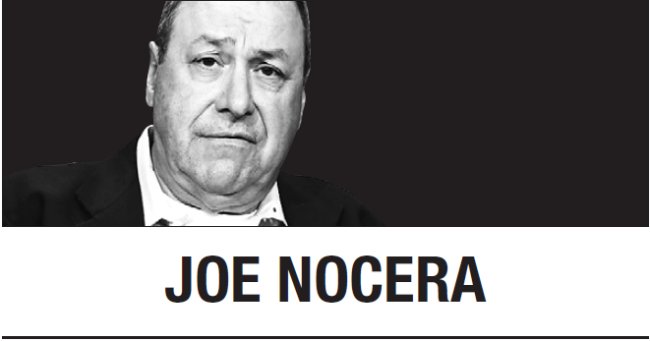
Twelve years ago, the Chinese put my brother-in-law, Frank Williams, out of business. Frank was one of the last costume jewelry designers in Providence, Rhode Island, a city where costume jewelry had once been a major industry. His small company, which he’d owned since 1978, had been profitable for its first 20 years. But in the late 1990s, the profits began to dry up.
Frank soon realized what was happening: Customers who had once bought large orders were buying small orders, and sending every new piece Frank designed to China, where Chinese manufacturers replicated them en masse for one-third the price. Although the Chinese knockoffs had been shoddy at first, by the early 2000s, they were every bit as good as Frank’s originals. “There was nothing we could make in the US that couldn’t be made far less expensively in China,” he once told me. So in 2006, he bowed to the inevitable, and closed his company.
Costume jewelry is hardly the kind of cutting-edge technology one tends to think of when discussing China’s unfair appropriation of Western intellectual property. But those designs were Frank’s intellectual property. And Chinese manufacturers stole them. It wasn’t right.
In industries that matter to China, like technology and autos, Beijing insists that Western companies enter joint ventures with Chinese entities -- arrangements that ensure the Chinese company will be able to unearth the Western company’s intellectual property. It too often insists that companies transfer their technology to China as a condition of doing business in the country.
And there’s outright theft of the sort my brother-in-law suffered. For years, for instance, any number of Chinese manufacturers of American brand-name sneakers also made counterfeits.
Which is why President Donald Trump was right to say, in effect, “Enough is enough.”
“No country likes to be told what to do,” said Dan Harris, a lawyer who writes the China Law Blog and specializes in Chinese legal issues. “And they especially don’t like to be told what to do in public. That goes double for China. If you push them loudly, they will feel they have no choice but to push back loudly.
“The tariffs,” Harris concluded, “will not be effective.”
But what will work? I spoke to a half-dozen China experts over the last few days, and not one of them said that tariffs make sense. And though proposals from the experts differed, they all believe that the only way to solve the problem is through the hard diplomatic work of negotiation.
“I believe the Chinese need to feel economic pain before they make any concessions,” said Scott Kennedy of the Center for Strategic and International Studies.
My worry is that the president hasn’t done enough to develop a consensus with allies, labor and business. His strategy is to fight tough, not fight smart. He has spent zero time bringing along business, figuring out how to approach China and what are the right things to ask for. He’s actually helping China out.
“Trump has China off-balance,” said Orville Schell, a well-known China expert at the Asia Society. “They are perplexed and worried. And they don’t want a trade war. But,” he said:
“Where’s the full court press to discuss how to step back and level the playing field while avoiding a trade war? Where is the Hank Paulson type, the guy with deep relationships in China? We don’t have anyone like that now. The State Department is missing in action. Treasury is, who knows? And then there is (US Trade Representative Robert) Lighthizer who seems to believe that without destruction there can be no construction. Trump is good at the first part, and not the second part.”
A third point many of these experts made is that the intellectual property problem has slowly been getting better. The long-standing practice of copying (stealing) Western movies and software isn’t nearly as bad as it used to be. Andy Rothman, a China expert with the investment firm Matthews Asia, sent me a recent survey taken of the Beijing members of the American Chamber of Commerce in China that showed only 16 percent viewed the forced transfer of technology as a “significant” problem.
Partly this is the result of Western pressure, but it’s also because Chinese companies have become sophisticated enough to have their own intellectual property they want to protect.
What was most painful in listening to these experts is hearing them talk about how close we were to making major strides in solving the remaining problem before Trump took office. The Trans-Pacific Partnership, which the US had negotiated with 11 other countries and which excluded China, had strong intellectual property protections.
Kennedy told me he believes those agreements, which gave the signatories big trade advantages, would have “left China on the outside looking in.” To get the same favorable treatment, China would have had to strengthen its IP protections as well. But of course one of the first things Trump did upon taking office was to pull the US out of the Trans-Pacific Partnership.
It also turns out that the Obama administration was in the process of negotiating a bilateral trade agreement with China that it was unable to complete before leaving office. That agreement, I’m told, had strong language about IP protections.
Which is to say, we were getting there, slowly -- probably too slowly, but getting there. Trump’s instinct to try to speed things up was a good one. His diagnosis of Chinese intransigence was largely correct. But the people I spoke to all seemed to be saying was this: What good is a diagnosis if the pill you take kills you?
Joe Nocera
Joe Nocera is a Bloomberg View columnist. -- Ed.
(Bloomberg)








![[Today’s K-pop] Blackpink’s Jennie, Lisa invited to Coachella as solo acts](http://res.heraldm.com/phpwas/restmb_idxmake.php?idx=644&simg=/content/image/2024/11/21/20241121050099_0.jpg)